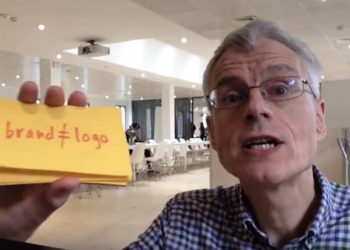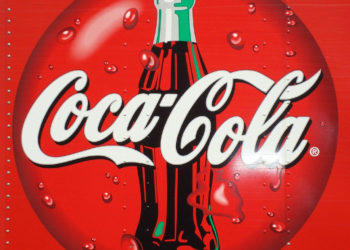When we started Kudos, we thought the name we had chosen was pretty much “does what it says on the tin” – we wanted to increase the visibility of research, and help researchers build their reputation, i.e., gain more kudos for their work. But it has become apparent over the years that the name and its intended meaning are not understood by everyone. For some, it was a case of “lost in translation” – did you know that, in Finnish, “kudos” means “tissue” (or “layer of the skin” as someone at a conference once memorably announced to me)? It also appears not to be a familiar word to many for whom English is their first language; very commonly people will refer to us as Kudo (and, on looking it up, I have now learned that you actually can have one “kudo” and two “kudos”, though “kudos” also functions as a singular noun.)

Being asked the story behind the name again recently – by a new member of our team – got me thinking about other companies in our sector with interesting names. So I contacted a few other organizations and asked if they had a story to tell. Here are the fascinating insights I’m able to share with you as a consequence!
 Ripeta – thanks to CEO Leslie McIntosh for explaining “Ripeta means a polite form of ‘repeat’ in Italian. For example, Ripeta la domanda is a polite way of asking someone to repeat the question. While in Italian the word is pronounced ‘Ree – pay – tuh’, many people say ‘Ree – peh – tuh’ So, our name came to be Ripeta as this is such a nice word to represent our company mission of improving the reproducibility and rigor of science. Also, the Ripeta.com domain was available 🙂
Ripeta – thanks to CEO Leslie McIntosh for explaining “Ripeta means a polite form of ‘repeat’ in Italian. For example, Ripeta la domanda is a polite way of asking someone to repeat the question. While in Italian the word is pronounced ‘Ree – pay – tuh’, many people say ‘Ree – peh – tuh’ So, our name came to be Ripeta as this is such a nice word to represent our company mission of improving the reproducibility and rigor of science. Also, the Ripeta.com domain was available 🙂
 ResearchFish – CEO Sean Newell: “I sometimes do tell prospective customers the story of how we got our name, but not because it’s an amusing story — in fact I start by saying “I wish I could tell you an interesting story about how Researchfish got its name” and then tell the very uninteresting story, and finish with “told you it wasn’t interesting”, which usually gets a laugh or two. The story goes that we wanted to call the product something hip, relevant, edgy, on the money, and so on and because of the nature of business, gathering together vast and nebulous quantities of disparate research outcome data, we thought of “Research Net”. We all felt good about this and no doubt did a few high fives, or the British equivalent of missing each others’ palms and then looking a bit awkward, but then one eagle-eyed techie spotted that Research Net was taken already (or at least the domain name was taken). He then joked “well, if we can’t have net, how about fish?”. We all laughed resoundingly. Oh, what a wit! Isn’t he terribly clever?! How droll indeed! There may have been wine. I am somewhat vague on what precisely happened next.”
ResearchFish – CEO Sean Newell: “I sometimes do tell prospective customers the story of how we got our name, but not because it’s an amusing story — in fact I start by saying “I wish I could tell you an interesting story about how Researchfish got its name” and then tell the very uninteresting story, and finish with “told you it wasn’t interesting”, which usually gets a laugh or two. The story goes that we wanted to call the product something hip, relevant, edgy, on the money, and so on and because of the nature of business, gathering together vast and nebulous quantities of disparate research outcome data, we thought of “Research Net”. We all felt good about this and no doubt did a few high fives, or the British equivalent of missing each others’ palms and then looking a bit awkward, but then one eagle-eyed techie spotted that Research Net was taken already (or at least the domain name was taken). He then joked “well, if we can’t have net, how about fish?”. We all laughed resoundingly. Oh, what a wit! Isn’t he terribly clever?! How droll indeed! There may have been wine. I am somewhat vague on what precisely happened next.”
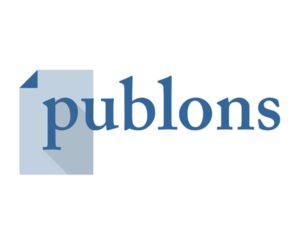 Publons – Managing Director Andrew Preston (also now Product Director of Web of Science): “I did a PhD in physics. In physics you get to know the fundamental (quasi)particles like photons, phonons, electrons, etc. You also get to know the pressure to publish and the resulting temptation to salami slice your results into more and more smaller papers. The joke was always that at some point you’d slice the salami so fine you’d get to the minimal unit of publishable material — the “publon”. For us what we set out to do was always about incentives and we thought of researcher outputs — whether articles, reviews, or anything else — as being made up of publons. I’d joke about this all the time with a professor I got to know well — Pablo Etchegoin. He died shortly before we started the company so in some way it could be thought of as a tribute for him too.” Co-founder Daniel Johnston adds “within two weeks of the first discussions we had the name, first pitched as:photon – quanta of light
Publons – Managing Director Andrew Preston (also now Product Director of Web of Science): “I did a PhD in physics. In physics you get to know the fundamental (quasi)particles like photons, phonons, electrons, etc. You also get to know the pressure to publish and the resulting temptation to salami slice your results into more and more smaller papers. The joke was always that at some point you’d slice the salami so fine you’d get to the minimal unit of publishable material — the “publon”. For us what we set out to do was always about incentives and we thought of researcher outputs — whether articles, reviews, or anything else — as being made up of publons. I’d joke about this all the time with a professor I got to know well — Pablo Etchegoin. He died shortly before we started the company so in some way it could be thought of as a tribute for him too.” Co-founder Daniel Johnston adds “within two weeks of the first discussions we had the name, first pitched as:photon – quanta of light
electron – quanta of charge
publon – quanta of publication”
 Morressier – CEO Sami Benchekroun actually already shared the Morressier story with the Kitchen, in this 2018 post by Alice Meadows: “I’m an avid sailor and have always greatly admired Bernard Moitessier who, in 1968, was on track to win a round-the-world yacht race, but elected to opt out of it as he did not want to be part of the commercialization of sailing. Moitessier’s determination, passion for his craft, and ethos of going against the grain appealed to me. So, when we were brainstorming names for our company, I was inspired to combine part of Moitessier’s name with “more research”, which is how Morressier was born.”
Morressier – CEO Sami Benchekroun actually already shared the Morressier story with the Kitchen, in this 2018 post by Alice Meadows: “I’m an avid sailor and have always greatly admired Bernard Moitessier who, in 1968, was on track to win a round-the-world yacht race, but elected to opt out of it as he did not want to be part of the commercialization of sailing. Moitessier’s determination, passion for his craft, and ethos of going against the grain appealed to me. So, when we were brainstorming names for our company, I was inspired to combine part of Moitessier’s name with “more research”, which is how Morressier was born.”
 Quartzy – Derek Gregg, Director, Marketing and Sales: “Our founders like to say that Quartzy came about because it’s the highest scoring first word you can play in Scrabble.”
Quartzy – Derek Gregg, Director, Marketing and Sales: “Our founders like to say that Quartzy came about because it’s the highest scoring first word you can play in Scrabble.”
 Zanran – Director Jon Goldhill: “Zanran is an easy case. We were looking for a 6-character word that was free as a dot-com. Nothing obscene in any known language. And my wife came up with this. Works!”
Zanran – Director Jon Goldhill: “Zanran is an easy case. We were looking for a 6-character word that was free as a dot-com. Nothing obscene in any known language. And my wife came up with this. Works!”
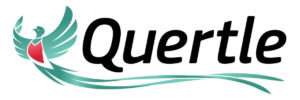 Quertle – Andy Friedheim, Head, Business Development: “Our founders, Vicki Burnett and Jeff Saffer are adventurers, explorers, and birders, who, in their travels to Costa Rica, came upon the resplendent quetzal (Pharomachrus mocinno). In Mayan culture, the quetzal was believed to bring wisdom to mankind, so it was natural to adopt this vibrant bird as our company mascot. Playing off the alliteration, our company name ‘Quertle’ is a combination of the words ‘Query’ and ‘Article’. Our main product offering, Qinsight – is an AI-based biomedical literature discovery platform; helping answer questions about published biomedical literature.”
Quertle – Andy Friedheim, Head, Business Development: “Our founders, Vicki Burnett and Jeff Saffer are adventurers, explorers, and birders, who, in their travels to Costa Rica, came upon the resplendent quetzal (Pharomachrus mocinno). In Mayan culture, the quetzal was believed to bring wisdom to mankind, so it was natural to adopt this vibrant bird as our company mascot. Playing off the alliteration, our company name ‘Quertle’ is a combination of the words ‘Query’ and ‘Article’. Our main product offering, Qinsight – is an AI-based biomedical literature discovery platform; helping answer questions about published biomedical literature.”
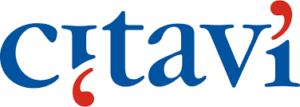 Citavi – Managing Director Hans Siem Schweiger: “The idea was to create a program for knowledge organization for students and researchers, and the first implementation was already in the mid-1990s at the University of Düsseldorf under the direction of Hartmut Steuber. The name of the program at that time was still LiteRat, which had several references. First, the obvious reference to literature, second, the English bookworm is a “Leseratte” in German, a “reading rat”, and finally, it is a reference to a packrat, which was also the name of a PIM program at that time. However, the funding for the project ran out, and no new funding sources could be found, so the project became quiet for a while. But in the mid-2000s the right people were found to bring it back to life, this time as a commercial product. Hartmut Steuber was on his way back to Germany from Zurich. In Zurich he had just made a toast to the founding of the company with Peter Meurer and Thomas Schempp. Only one thing was still missing: a new name for the program. They had talked their heads off and agreed that LiteRat should be replaced, but they hadn’t come up with a brilliant idea yet. Sitting in the train, Hartmut conjugated the Latin verb citare – and lo and behold it had a past tense form that was a perfect fit: Citavi – “I cited”.”
Citavi – Managing Director Hans Siem Schweiger: “The idea was to create a program for knowledge organization for students and researchers, and the first implementation was already in the mid-1990s at the University of Düsseldorf under the direction of Hartmut Steuber. The name of the program at that time was still LiteRat, which had several references. First, the obvious reference to literature, second, the English bookworm is a “Leseratte” in German, a “reading rat”, and finally, it is a reference to a packrat, which was also the name of a PIM program at that time. However, the funding for the project ran out, and no new funding sources could be found, so the project became quiet for a while. But in the mid-2000s the right people were found to bring it back to life, this time as a commercial product. Hartmut Steuber was on his way back to Germany from Zurich. In Zurich he had just made a toast to the founding of the company with Peter Meurer and Thomas Schempp. Only one thing was still missing: a new name for the program. They had talked their heads off and agreed that LiteRat should be replaced, but they hadn’t come up with a brilliant idea yet. Sitting in the train, Hartmut conjugated the Latin verb citare – and lo and behold it had a past tense form that was a perfect fit: Citavi – “I cited”.”

- Writefull – Co-founder Juan Castro: “Being language enthusiasts building a language tool, we wanted a play with words. We wanted the name to cover the concept of writing, and the idea of a complete, full language check. ‘Write’ + ‘full’ gave Writefull. This name had a ring to it thanks to ‘rightful’, and we liked how it played with the English morphology; a nice language twist.”
 Gigantum – CEO Tyler Whitehouse: “When we started the company we were really focused on how to improve the “upward spiral” of science, the idea being that individual results in general build on previous ones and the main problem is in having the proper edifice for this kind of construction. This is especially true around code and data, and the product was built to provide a kind of edifice. We also knew that people working together is a crucial component to scientific progress. Finally, we are all big fans of Isaac Newton and he has a well known and attributed quote about his own accomplishments which is “If I have seen further it is by standing on the sholders [sic] of Giants”. The idea of his quote is far older though, and goes back to a latin phrase which is nanos gigantum humeris insidentes, which refers to dwarves standing on the shoulders of giants. So, we decided to call the company Gigantum, which has gone fairly well except for a few things:
Gigantum – CEO Tyler Whitehouse: “When we started the company we were really focused on how to improve the “upward spiral” of science, the idea being that individual results in general build on previous ones and the main problem is in having the proper edifice for this kind of construction. This is especially true around code and data, and the product was built to provide a kind of edifice. We also knew that people working together is a crucial component to scientific progress. Finally, we are all big fans of Isaac Newton and he has a well known and attributed quote about his own accomplishments which is “If I have seen further it is by standing on the sholders [sic] of Giants”. The idea of his quote is far older though, and goes back to a latin phrase which is nanos gigantum humeris insidentes, which refers to dwarves standing on the shoulders of giants. So, we decided to call the company Gigantum, which has gone fairly well except for a few things:
– Pronunciation varies wildly.
– Almost nobody gets the connection to the origin story without us telling it
– The most common misspelling is gignatum
 (These last points resonate with me – the distinction between the UK pronunciation of Kudos, “queue-doss”, and the US “coo-doze”, often causes confusion. I sometimes find myself adopting a sort of transatlantic pronunciation, “queue-dose”. And in addition to the misspelling I mention above, Kudo, we also often get the antelope treatment – Kudus! Maybe we should have picked some spiralling antlers for our logo rather than our butterfly – which, incidentally, signifies the butterfly effect and the idea that small actions can have a big impact.)
(These last points resonate with me – the distinction between the UK pronunciation of Kudos, “queue-doss”, and the US “coo-doze”, often causes confusion. I sometimes find myself adopting a sort of transatlantic pronunciation, “queue-dose”. And in addition to the misspelling I mention above, Kudo, we also often get the antelope treatment – Kudus! Maybe we should have picked some spiralling antlers for our logo rather than our butterfly – which, incidentally, signifies the butterfly effect and the idea that small actions can have a big impact.)
Is there a good story behind your organization or project’s name? Please share it in the comments if so!
Discussion
19 Thoughts on "What’s in a Name? The Stories Behind Some Scholarly Publishing Brand Names"
May we add the story that’s behind the name Cadmore Media?…
Well, here it is. I co-founded the company with Simon Inger for many reasons, one of them being his previous successful entrepreneurship experiences. After the sale of CatchWord, he’d bought himself a wood – yes, that’s a thing – called Cadmore. So, for luck, and because I’m pretty outdoorsy and I like trees (who doesn’t?), we adopted the name for the new company with the hope that, one day, I can have a wood too (to be fair, I think I’d actually rather go for a lake). And – yes, the domain name was available, the word is easy to pronounce in many languages, and the SEO is really good since it’s unique.
The fun twist though is that we found out not long ago that there’s a typo on the deed and that the wood is now actually called Cadmoor. Oh well.
As I was reading the portion about Kudos, without realizing it, I started saying “Kudos” out loud over and over again in an attempt to pronounce it in all the different ways you mentioned. My husband thinks social isolation is getting to me, and he might not be wrong 🙂 Thanks for the interesting post!
For yet another name origin story, TrendMD’s name originated out of its initial creation by Paul Kudlow, a medical doctor and PhD with a decade in researching medical literature, and co-founder Alan Rutledge, a technology whiz and entrepreneur who also happened to be a patient with a severe and rare autoimmune disorder. They created TrendMD to solve their own unique research needs, so the initial goal was to provide users with trending articles in medical literature. Having expanded our service now to over 5,000 sites in every scholarly discipline, we now think of ourselves as “trend doctors,” finding trends in academic literature and presenting the best articles for the right people.
Thanks Bert – great description!
This is really a fun post–thanks, Charlie!
While the explanations are all very amusing and illuminating, the exercise does make you appreciate the clarity of names like Crossref and DataCite!
(Having said that, I’ve always thought Kudos has that clarity.)
As for the pronunciation issue (which my German teacher in high school pronounced as “pronounciation”), I still occasionally encounter somebody in a not-scholarly-publishing context pronouncing DOI as “doy.” Oy!
My partner found the name for my independent research organization: Axios, which is Greek for ‘judged worthy’. We had to tack ‘Review’ onto the end to make it a bit clearer what we did, and made getting the domain easier. Unfortunately, the appearance of the Axios news agency in late 2016 (https://www.axios.com/) started taking up a lot of name space.
I think that the URL and coming in top in search engine results have become the dominant factor in choosing a company name these days. It’s why so many internet startups have stupid nonsense word names (anyone remember “Flooz”?). It’s also why so many companies choose to use camel case names (https://en.wikipedia.org/wiki/Camel_case), as it allows you to combine different words into one new word and, presumably, score well in internet search results.
Great post Charlie, next up, how did the startups create their logos?? I think I know why Kudos has a butterfly, but perhaps you can confirm ?
Hi Adrian, yes, our logo derives from the butterfly effect and the idea that small actions can have a big impact. I agree a post about logo designs could be fascinating. I used to work at Ingenta and the mosaic logo was developed because the company was originally headquartered in Bath (a Roman city, for non-UK readers!) I was also involved in redesigning the DOI logo a few years ago – we carefully made the “d” a different colour to the “oi” (in the full colour version of the logo) to differentiate the D from the O, and reinforce the fact that it’s a digital identifier for any object, rather than an identifier. for digital objects. I am a sucker for logo design stories! (One of my favourites in our sector is MIT Press – SO clever, and timeless – a real classic).
For Cactus Communications (CACTUS), many do not know that in the very early stages of the company, 18+ years ago, most all of our clients were based in Asia, and the earliest of clients were in Japan. Hence, the name CACTUS — in Japanese culture, a cactus is a plant that personifies everything that is good in a vendor partnership: nourishing, longevity, heartiness, does not need a lot of time to nurture, etc. It was NOT because we are thorny and prickly! 🙂 … far from it — we are the opposite! It is in the DNA of the company to be highly collaborative… almost to a fault.
The other element of the name CACTUS is that the second (center) “C” is red in the logo. This is in homage to the prestige and presence that the color red has in the Japanese (and other Asian) cultures… to the point that the flags of Japan, China, and South Korea have it as a predominant color. Specifically, for Japan, you could say that the red “C” in CACTUS to some extent emulates the importance of the sun in the flag of Japan, and it its culture — in the folklore of CACTUS, this was intentional.
Our flagship brand Editage has a simpler, less subtle evolution. While nobody remembers for sure how it came about, the obvious theme was that as the freelancer model of researcher support and author editing services was being commercialized, it was a “new age for editing services” — hence, Edit Age, or Editage. Now, people ask whether the “a” is a hard “A” (as in Age), or a soft “a”, pronounced “au”. For us, it doesn’t matter, and we see different cultures pronounce the brand differently based upon localized language. This fits with the culture of the company, as well, because we are all about localization of language.
So there you have it!
Thank you Don – I had no idea of the backstory to Cactus and its visual identity, so that is really interesting! And Editage is indeed a great example of one of those names no-one knows how to say. I tend to say “Edit-arge” but also frequently hear “Edit-idge”. Learning the story makes it much more memorably “Edit-ayj”.
Silverchair’s name actually came BEFORE the band, so we scored the domain name. It was inspired by the fourth book in The Chronicles of Narnia series because of its themes of persistence. The inspiration still weaves its way through the company, both in team names (e.g. Narnia) and building locations (e.g. Cair Paravel).
The confusion with the band has led to being tagged in some entertaining social media posts, and also an application for an Editorial Assistant position from someone who listed as one of his qualifications that he had been an office manager for Soundgarden—he didn’t get the job.
I would like to share this story behind the naming of Scopus:
In the early 2000’s Elsevier was thinking about the development of a multidisciplinary abstract and citation database, to navigate through the scholarly literature. There was an offsite meeting in a small town at the Dutch seaboard where the whole team came together to work on the initial ideas for this new “navigation” product. After a long day of meetings, it was time for relaxing and the team was going on a walk in the surroundings. While enjoying the nature, the team was listening to bird noises and wondering what birds were making this. One of these turned out to be the Chiffchaff, a small migratory bird with excellent navigation skills. Being impressed with this little bird and its great navigation capabilities, the idea came to name the new product they were working on after this bird. To name the product Chiffchaff did not work out, but the Latin name of the bird PhyllosSCOPUS collybita was used as inspiration to call the new product Scopus. Now, more than 15 years later, Scopus has become one of the major abstract and citation databases and still proud on its excellent navigation skills to find relevant research that was named after this bird.
What a nice story Wim – thank you for sharing!
